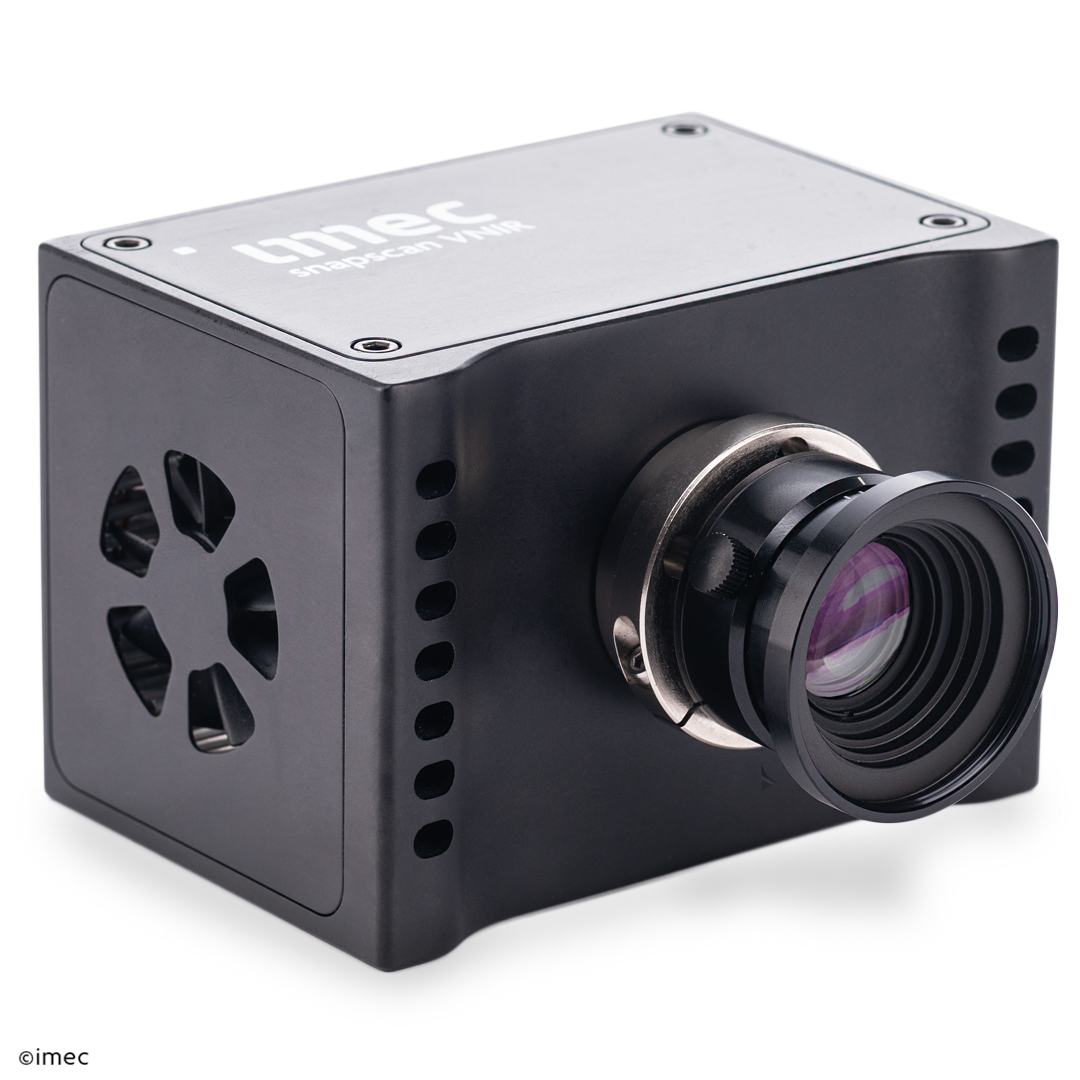Spatial scanning captures images by scanning the scene spatially while capturing spectral information simultaneously. The prominent methods in this category are (a) imec’s Snapscan, which is described in this article and (b) Pushbrooom scanning, the topic of the next article.
In imec’s patented technology a Fabry–Pérot etalon (a pair of parallel semi-transparent reflecting surfaces) is deposited on each pixel of an image sensor. This effectively places a band-pass spectral filter on each pixel of an image sensor array. The etalon distance is carefully controlled and this makes it possible to limit the sensitivity of each pixel to a particular spectral band. When pixel-sized etalons are fabricated directly on the pixel-structure instead of on a glass window, issues such as cross-talk between pixels are minimized.


imec Snapscan cameras: Fabry–Pérot band-pass filters are deposited on the image sensors in a striped pattern of filter bands, spanning the broad spectral range of the underlying VNIR or SWIR imager.

Snapscan cameras generate HSI datacubes in seconds by translating the image sensor with its striped pattern of filter bands through the image circle that is projected by the lens or microscope optics onto the focal plane.
Pixel values are read out and can now be rearranged into HSI datacubes with each λ plane along the z-axis representing the (x,y) intensity values measured for a particular wavelength.
Since the scanning process is integrated within the camera, HSI datacubes of stationary samples can be efficiently created in seconds. Researchers do not have to configure translation stages, conveyor belts or other methods of motion control. On most imaging platforms, one simply replaces a conventional camera with a Snapscan camera to make an imaging system capable of Hyperspectral Imaging. The systems are robust enough for lab operation as well as for use in the field.
Snapscan selection table
Click on a green button within the above table to get more details about a particular camera model.



